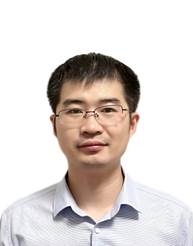学术报告通知(2023-4-17)
作者:浏览:时间:2023-04-12
报 告 人:闫文韬 (Wentao Yan)
报告名称:High-fidelity Modeling of Process-Structure-Property Relationships in Additive Manufacturing
报告时间:2023年4月17日上午10:15(星期一)
报告地点:机电工程学院B110报告厅
报告人简介:Dr. Wentao Yan has been an assistant professor in the Department of Mechanical Engineering, National University of Singapore (NUS) since August 2018. His research group with 20+ students focus on multi-scale multi-physics modeling, experimental investigation and data analysis of additive manufacturing. His team is the biggest winner in the 2022 US NIST AM-Bench Simulation Challenges by winning 9 awards in the total 25 tests (totally 40 awards were presented). He has published more than 90 papers on flagship journals, such as Nature Communications, Acta Materialia, I J Machine Tools and Manufacture, JMPS and CMAME. He has trained 9 postdocs and all of them got faculty positions in decent universities, like University of Bristol and Xi’an Jiao Tong University. Before joining NUS, he was a postdoctoral fellow at Northwestern University and also a guest researcher at the National Institute of Standards and Technology, in the USA. He received his Ph.D. degree jointly at Tsinghua University, Beijing (09/2012-10/2014) and Northwestern University, USA (10/2014-03/2017). He got his Bachelor degree from the Department of Mechanical Engineering, Tsinghua University, Beijing in 2012.
报告内容简介:The wide applications of additive manufacturing are hindered by the lack of comprehensive understanding of process-structure-property relationships. To this end, we have developed and seamlessly integrated a series of high-fidelity multi-physics models. Specifically, multiphase flow models using the coupled computational fluid dynamics and discrete element method simulate the powder spreading procedure and powder spattering and denudation phenomena in the powder melting procedure. The powder melting model is powerful to reproduce the molten pool flow and relevant defects (e.g., lack-of-fusion and keyhole pores) by incorporating the major physical factors, e.g., the physically-informed heat source models, i.e., for an electron beam from micro-scale simulations of electron-atom interactions and for a laser incorporating multi-reflection and Fresnel absorption. The microstructure evolutions at both the grain- and dendrite- scales are modelled using the phase field and cellular automaton methods. The mechanical properties and thermal stresses are simulated using the crystal plasticity finite element model, which incorporates the realistic geometry (rough surfaces and voids), temperature profiles and microstructures. These models have proven to be useful in revealing the physical mechanisms, which have been validated against experiments.

扫一扫分享此页


